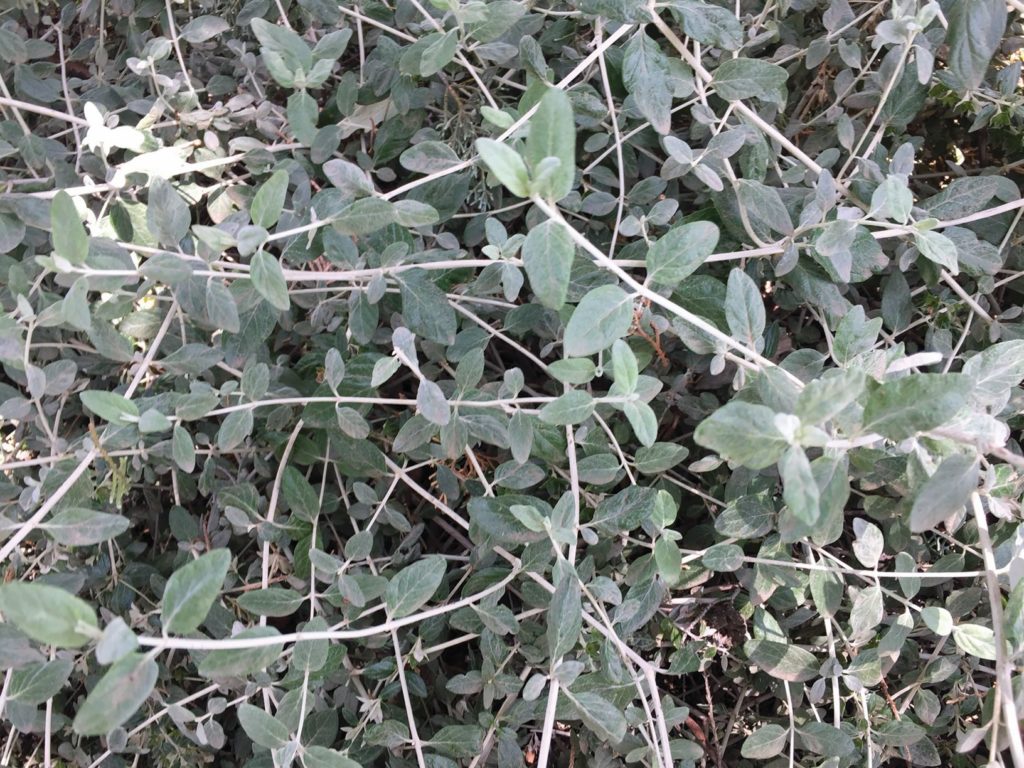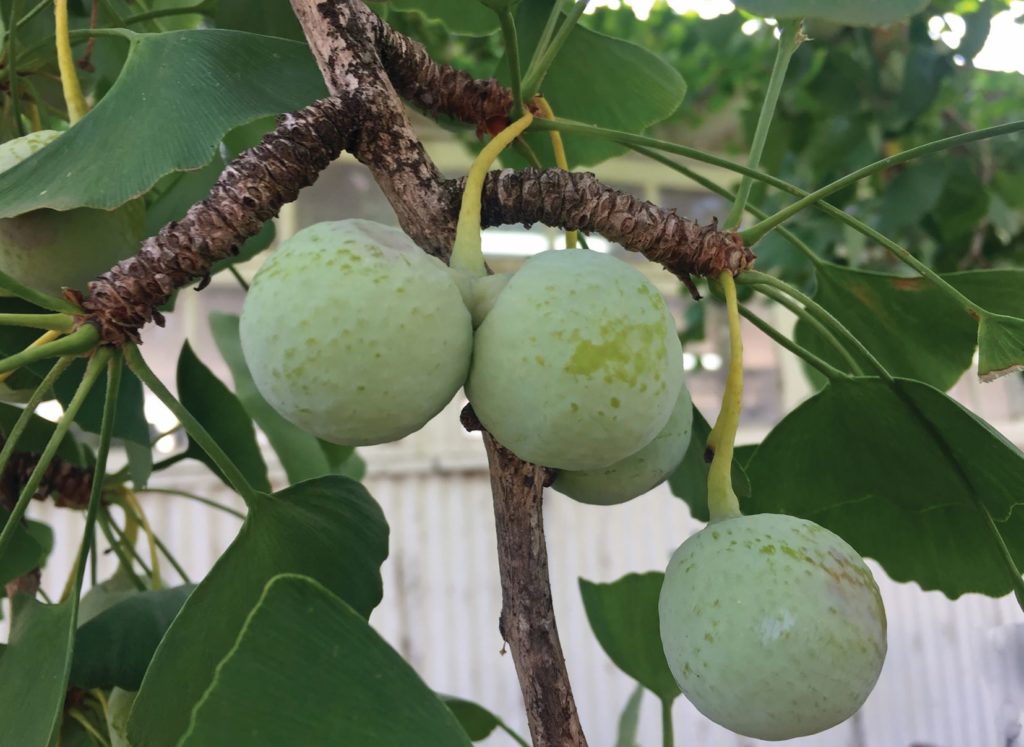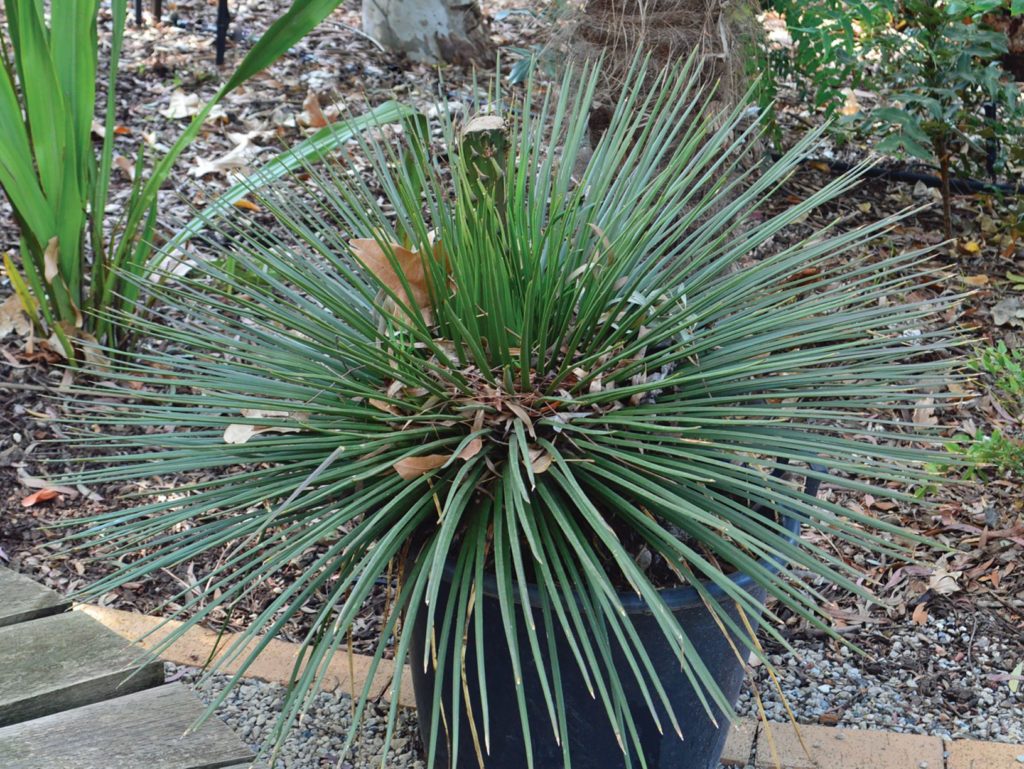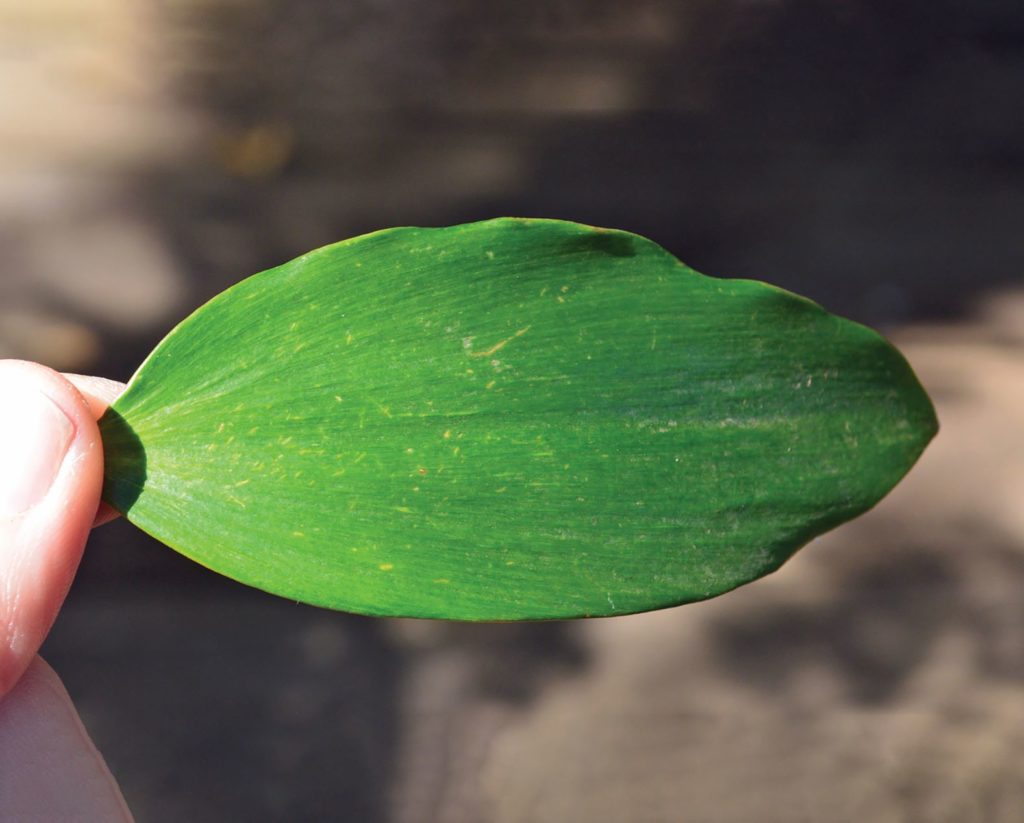
Terry and Mia’s garden, which I discussed last week, features anastonishing range of plant types. Here are some of the plants that feature throughout the beautifully landscaped property:
1. Teucrium fruticans, commonly known as Shrubby Germander, is a hardy shrub from the Mediterranean region, which grows to around 1.5m tall and wide. Its showy silvery-blue foliage makes it a fabulous contrast plant, giving gardens year-round interest. It’s covered in bee-attracting violet flowers during summer.
T. fruticans, a member of the mint family,grows happily in full sun to partly shaded positions, and isn’t fussy with soil, providing it is well drained. This plant is suitable for Xeriscape gardens as it needs little if any additional watering once it’s established. It is also tolerant of our frosty winters.

2. Ginkgo biloba or Maidenhair Tree is a beautiful and fascinating deciduous tree from South East China, believed to have had a worldwide distribution back in the day. These ancient trees are long lived, with specimens gracing this earth for 1,000 years or more. Their growth is slow (on account of their enviously long lives) and they reach up to 30m in height and 15m in width. Bark is a variable grey-brown. The lovely bright green foliage is fan shaped and often two-lobed, turning a bright yellow before falling in autumn. Extracts from the leaves have a long history in traditional medicine.
Male trees develop cones during spring and the female trees produce round fruits which ripen in late autumn. The fallen fruit is an assault to the senses and an absolute hazard to unsuspecting foot traffic. I can only describe the smell as vomit-like. Surprisingly, the seeds are perfectly edible once thoroughly processed and roasted.
G. biloba grows well in sunny aspects with well drained soils. It tolerates pollution, cold and drought once established.

3. Agave gemniflora, originating from Mexico and known as Twin Flowered Agave, is a striking dwarf Agave growing up to 80cm high and wide. The narrow dark green leaves arch from the centre of the plant, forming a dense rosette.
Mature plants (around three years) produce impressive 3m flower spikes with yellow flowers in pairs. This means the death of the plant as Agaves are monocarpic and die once they flower and set fruit. Sometimes they will throw up suckers in the meantime, however, and they can also be propagated from seed.
A. gemniflora is low-maintenance, drought- and cold-tolerant, and is an excellent pot specimen. They appreciate dappled shade in hot dry climates such as ours and require a sandy well-drained soil. Allow soil to dry out during winter to avoid rotting.

4. Agathis australis, or New Zealand Kauri tree, is an evergreen conifer growing 30-50m in its natural environment – it is amongst some of the tallest trees in the world. The trunk has almost no taper and the thick bark can be ash, blue-grey or mottled purple. The foliage, unusual for a conifer, is bright to deep green. On mature trees, the pollen and female cones develop over around 20 months. The winged seeds appear in early autumn and have only a short viability.
A. australis has important traditional uses, such as making tools and canoes, using powder from the soot for tattooing, and burning the gum for heating and lighting.








